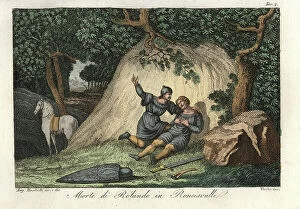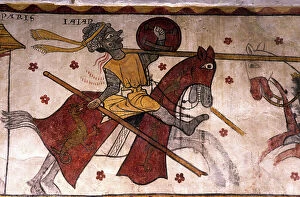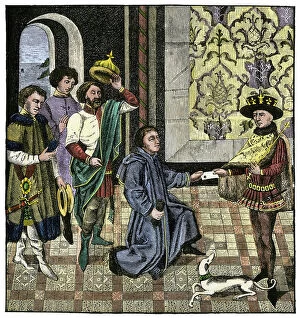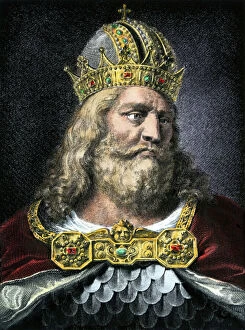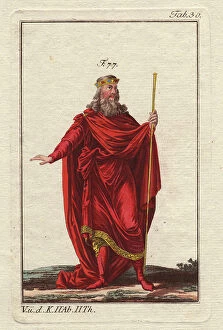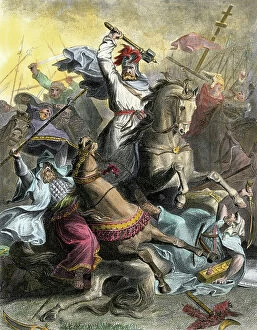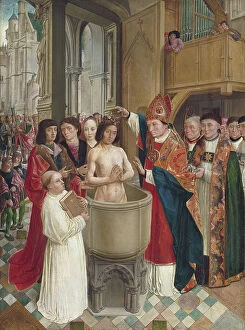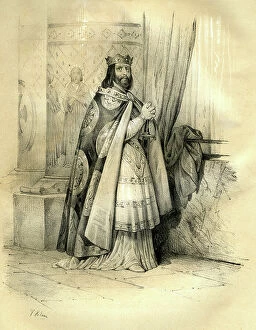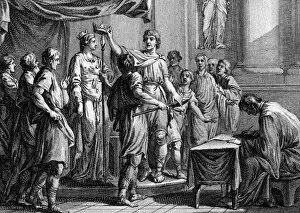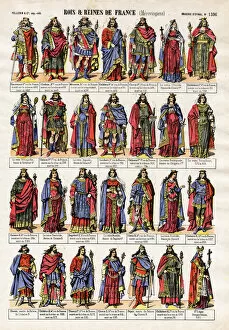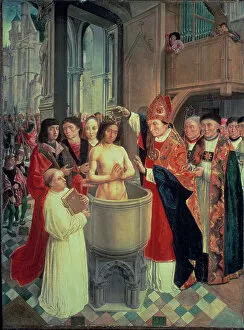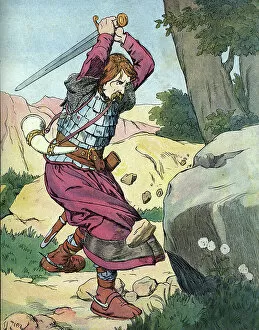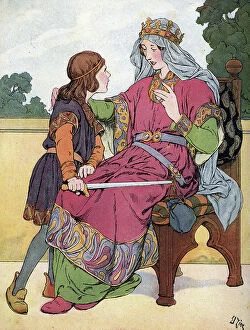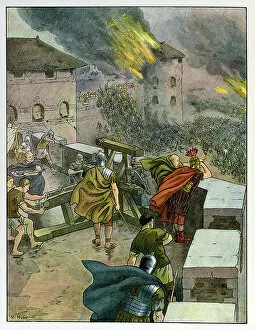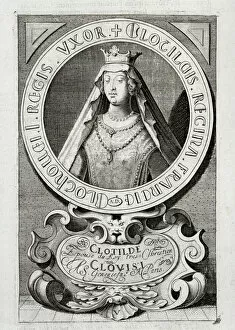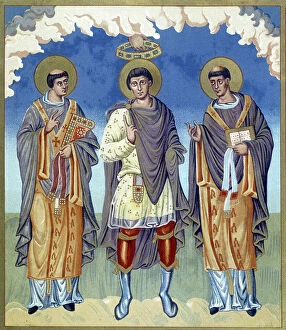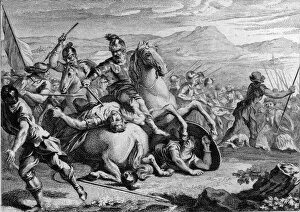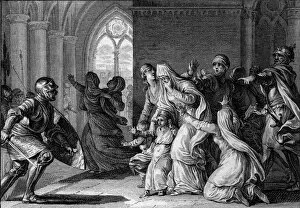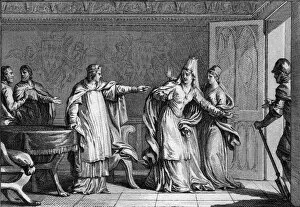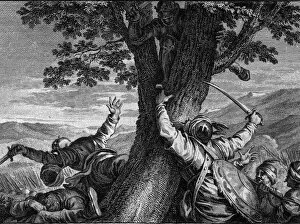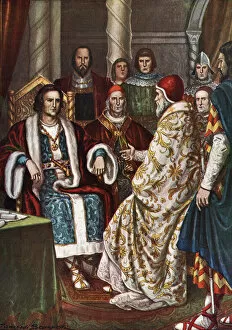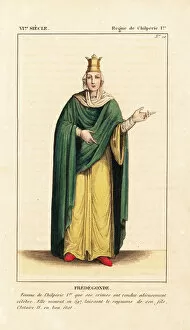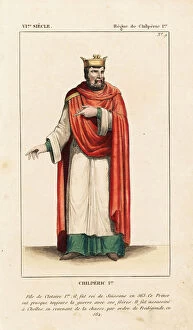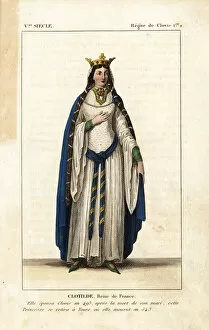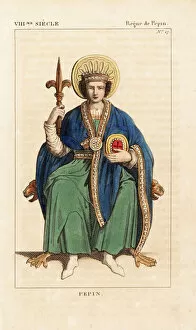Franc People Collection
"The Franc People: A Glorious Legacy of Kings, Warriors, and Legends" Step back in time to witness the baptism of Clovis I
For sale as Licensed Images
Choose your image, Select your licence and Download the media
"The Franc People: A Glorious Legacy of Kings, Warriors, and Legends" Step back in time to witness the baptism of Clovis I, a pivotal moment in history that took place on 25/12/496 (or 499) in Reims. Saint Remi's anointing of Clovis symbolized the birth of Christianity among the Franks. Clovis, a remarkable ruler, also established the Salique Law in 508. This code would shape Frankish society for centuries to come, ensuring justice and order within their kingdom. In another captivating scene depicted by Edouard Francois Zier, we see Charles the Great blessing his nephew Roland's engagement with Aude. Love intertwines with power as this noble family celebrates unity and alliances. The legendary Charlemagne himself appears once more as he presents his nephew with Durandal - a sword steeped in myth and glory. This precious gift carries both historical significance and symbolic weight as it represents honor and valor on the battlefield. Roland's bravery shines through when he attempts to break Durandal on a rock during the Battle of Roncesvaux. His sacrifice ensures that this mighty weapon does not fall into enemy hands – an act immortalized by artists throughout history. Delving deeper into Charlemagne's past, we encounter him as a young prince alongside his mother Bertrade de Laon or "Berthe au grand pied. " Their bond reflects familial love amidst political turmoil – an intimate glimpse into their lives beyond royal duties. Queen Bertrada of Laon leaves her own mark on Frankish history. Known as "Bertha Broadfoot, " she stands tall beside her son Charles – two influential figures who shaped their era through diplomacy and leadership. Alsace tells its children stories passed down through generations; tales recounting Roman domination coming to an end at the hands of invading Franks. Uncle Hansi captures these narratives beautifully but beware potential copyright restrictions.

